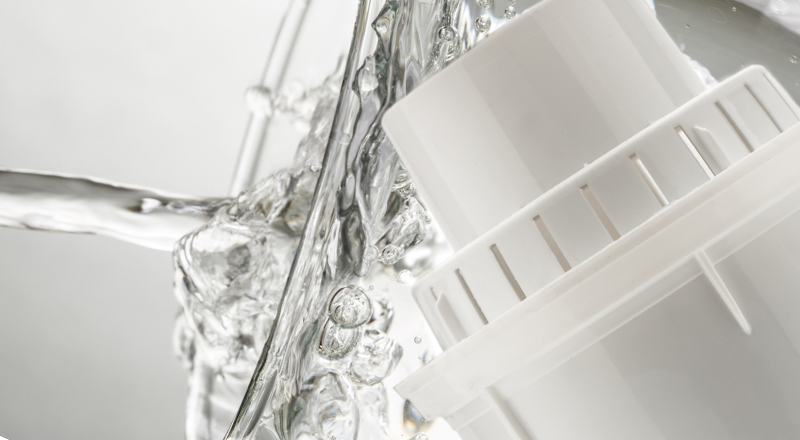Wonderful water

The quest for better taste and fewer impurities
With concerns about safe drinking water looming in the news, some consumers are turning to water filters to remove impurities and improve taste.
Water filtration systems range from the simplest filtration pitchers to whole-house systems; some use electricity and others don’t. Choosing what you need may depend on what contaminants are in the water, and how much water your family consumes.
Whatever system you choose, keep in mind that you’ll need to change the filter regularly. Some systems offer alerts or warnings when the filter needs to be changed. The frequency of filter changes will add to your operating costs.
TECH TIP
Water quality reports
Your tastebuds can tell you a lot about your drinking water supply—but for details about purity you’ll need something more scientific.
If your water comes from a public water supply system, study its annual water quality report, called the consumer confidence report (CCR). The Environmental Protection Agency requires each water utility to perform tests and provide this information to customers each year. These reports give a general idea of the water purity for a particular community. If your water comes from a well or cistern, you’ll have to arrange your own test to find out exactly what contaminants may be present in the water. Your county Extension agent should be able to help you choose a reliable kit or company to hire.
SMART SHOPPER
Match the system to your needs
Only concerned about better water for drinking and cooking? A water purification carafe may be all you need. Carafes typically use an activated carbon filter to remove some (but not all) traces of chemicals or metals from the water. When comparing choices, consider capacity (will that be enough filtered water for a full day?) and size (will it fit in your refrigerator?). Next, consider speed—some water carafes can take half an hour or more to filter the water.
Options for filtering larger quantities of water include countertop filters (either pour-through styles or connected to the faucet), systems mounted directly on the faucet, under-the-sink models, and whole-house filters, also known as in-line systems.
Most faucet-mounted filters can be installed by unscrewing the faucet’s aerator, then screwing on the filter. Be sure to select a model that’s compatible with your faucet.
Under-sink water filters attach to the water supply line. An advantage: they’re out of sight. A disadvantage: they take up space under the sink. Options include reverse-osmosis systems. These systems generate significant wastewater and will lead to a higher monthly water bill.
Whole-house filters attach to the main water line coming into the house. Calculate your overall water needs—including showers, dishwashing, laundry, everything—and select a model with an adequate flow rate.

